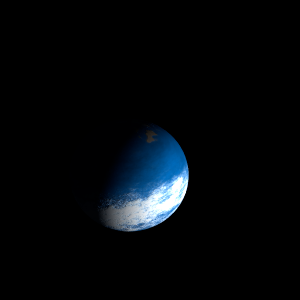|
|
Space Astro
|
Info for exoplanet "Thee Mesut En"
| Scientific (actual) data |
|---|
| Name | Kepler-1024 b |
| Planet status | Confirmed |
| Radius | 0.349 |
| Orbital period | 66.4162 |
| Discovered | 2016 |
| Updated | 2021-02-05 |
| Tconj | 2455020 |
| Publication | Announced on a website |
| Detection type | Primary Transit |
| Alternate names | 2MASS J19274823+3815061 b, K01950.01, KIC 3118797 b, KOI-1950 b, KOI-1950.01, WISE J192748.21+381506.3 b |
| Star name | Kepler-1024 |
| Right ascension | 291.95° |
| Declination | 38.25° |
| Mag j | 14.589 |
| Mag h | 14.053 |
| Mag k | 14.05 |
| Star distance | 1017 |
| Star metallicity | -0.1 |
| Star mass | 0.81 |
| Star radius | 0.78 |
| Star age | 5.25 |
| Star temperature | 5143 |
| Star alternate names | 2MASS J19274823+3815061, KIC 3118797, KOI-1950, WISE J192748.21+381506.3 |
| Wikipedia article | Kepler-1024 b |
Back
| |
| Fictional info (?) |
|---|
| Suggested name | Thee Mesut En |
| Planet type | Cold planet |
|
| Atmosphere | Neon | 23% |
| Carbon monoxide | 22% |
| Ammonia | 22% |
| Ethane | 15% |
| Hydrogen peroxide | 13% |
| Hydrogen | 2.1% |
| Helium | 1.1% |
| Ammonium hydrosulfide (NH4SH) | 0.53% |
| Xenon | 0.0018% |
| Atmospheric pressure | 4 bar |
 |
| No known satellites |
| Google search for Thee mesut en |
|
Website by Joachim Michaelis
|
|
|
|